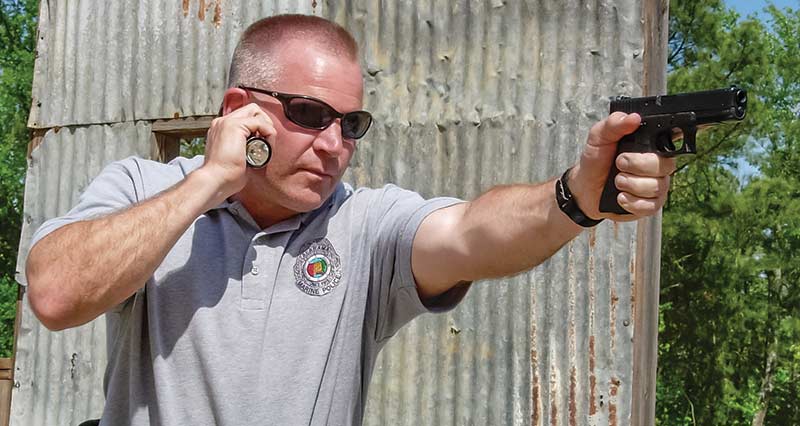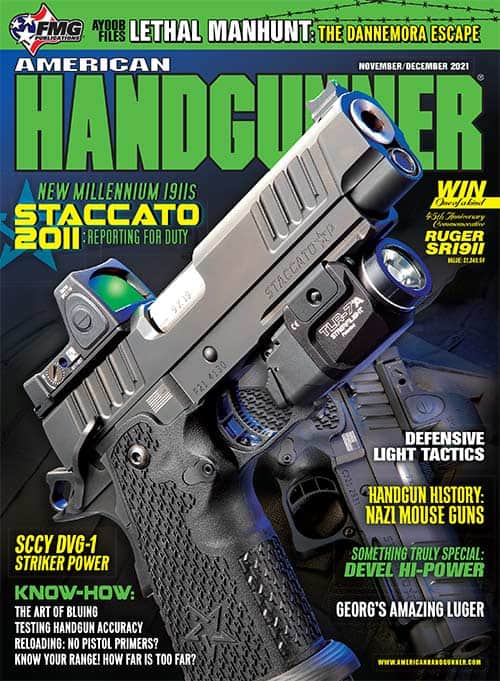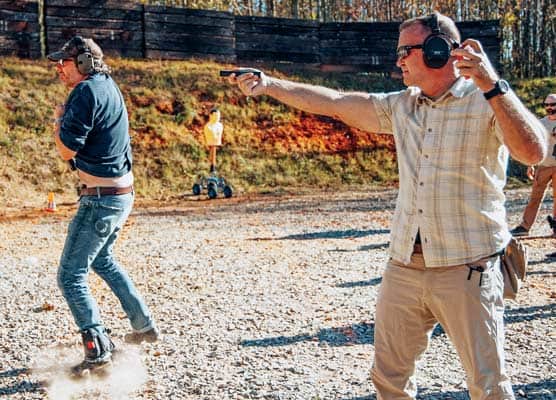Essential EDC GearThe Flashlight
Your Best Defensive Tool
Flashlights are an essential piece of gear. For everyday life we use them for mundane tasks like finding the keys that fell underneath the car seats. It’s my most used piece of carry gear. For self-defense they’re mandatory — bad guys love low-light environments. Flashlights allow you to avoid danger or, if necessary, defend against an attack.
Primitive man carried torches to navigate unfamiliar terrain. We do the same with modern “torches.” You can communicate with partners using a light to indicate your location, an exit to escape or designate an area of concern. “On my light …” you illuminate an escape route. You can coordinate actions and information like “move to the stairs” or “I see someone moving.”
Light Encounters
Shining a bright light in the eyes can disorient a potential threat. The parking garage is dark — low-light environments exist 24 hours a day — so you already have a flashlight in hand. A man advances on you. His body language says, “trouble.” You snap the light up, shine it in his eyes for a second, then the light is off and you’re moving. The bright light stops his advance but, had he charged, you wouldn’t have been in the last location he saw you.
Flashlights are impact weapons. In the old days, this was the reason to carry a large Maglite. A “hammer strike,” using the light’s body concentrates your force onto a smaller, harder surface than your flesh and bone and reduces the chances of injuring your hand.
In defensive situations, the light is used to locate and identify possible threats, and if necessary, engage with accurate fire. Remember Safety Rule II: Never point the muzzle at anything you’re not willing or ready to destroy. Every year people negligently injure and kill family and friends because they failed to identify what they were shooting at.
Options
Small, lightweight lights are easy to carry, and today’s options put out plenty of light, more than you really need. (Yes, there is such a thing as “too bright,” especially indoors.) It’s a good idea to have small lights for administrative purposes, and bright light for defense. I carry hand-held lights. Weapon mounted lights are a little too bulky for carry but are great for home defense. Regardless, simple is best. I use lights with a momentary on/off action button on the tail cap and a constant on/off mode with a full click.
You’re constantly turning the light on and off; this is where the momentary switch comes into play. Lights with one mode of output are best. You don’t want the light cycling from low to high to strobe to S.O.S. and back again as you’re using the momentary switch. Keep it simple.
You use the light as little as possible, or as much as necessary. There may be enough ambient light in the environment to move, clear or search without turning the light until locating a possible threat. Or it’s so dark you can’t see. You’ll need light to ensure you don’t blindly step into danger.
The Basics
There’s no one technique for hand-held lights that will do everything necessary. You also don’t need 19 different options. I teach four techniques.
When drawing the support hand and light are positioned at the side of the jaw. This aligns the eyes, sights and muzzle — quickest technique to get hits on a target — and ensures you don’t sweep the support hand or arm with the muzzle when drawing. The light is positioned on the right side of the pistol when working to the right of cover or clearing a corner to the left. For working to the left of cover, or a right turn corner, the light is located on the left side of the weapon.
The “old” F.B.I. technique, simply holding the light off to the side, is great for scanning while keeping the pistol in a safe, low-ready position. When holstering, the light is brought back to the jaw, again positioning the hand and arm out of harm’s way, and where it’s ready should danger reappear.
Working with a firearm and flashlight complicates things exponentially. There’s additional equipment to consider. It takes a little experimenting to discover what lights serve you best, and to determine how and where you’ll carry them. There are principles for working with lights and specific techniques to employ the lights safely and efficiently.
Like all defensive skills it’s about training, practicing and being prepared.







